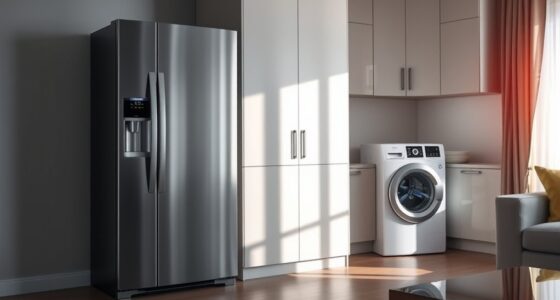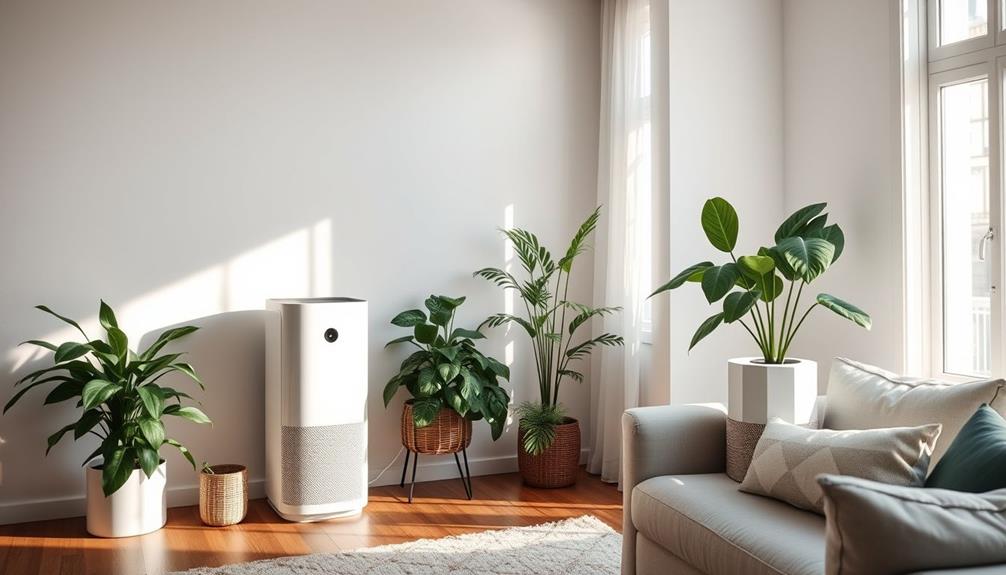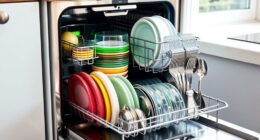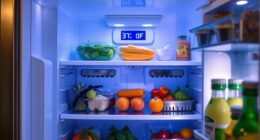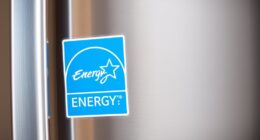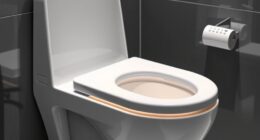Ever thought about why appliances can’t achieve 100% efficiency?
Well, buckle up because we’re about to dive into the fascinating world of energy losses and inherent inefficiencies.
From the limitations of materials and technology to human factors and user behavior, there are countless reasons why our beloved appliances fall short of perfection.
But fear not, for this article will explore the technical, analytical, and detailed aspects behind these shortcomings, while keeping you engaged every step of the way.
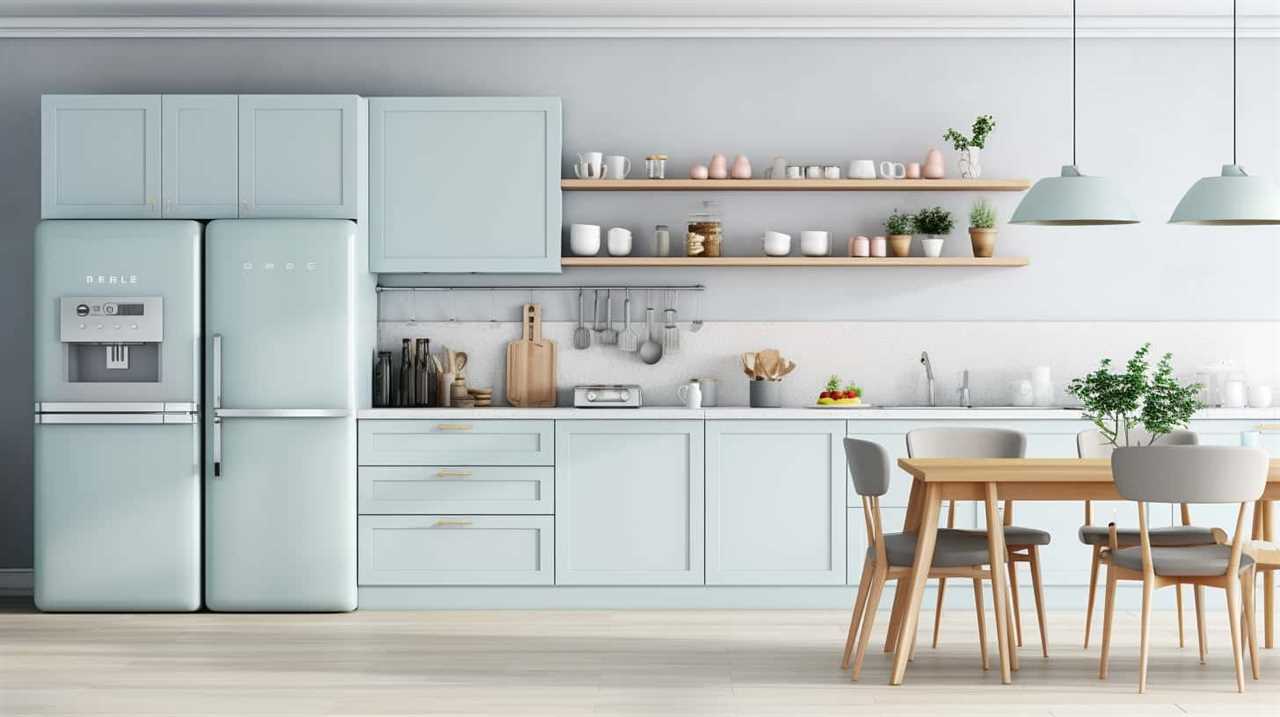
Get ready to master the science of appliance efficiency!
Key Takeaways
- Energy losses occur during conversion processes and due to inherent inefficiencies of components.
- Material and technological limitations can impact appliance efficiency.
- Heat dissipation and thermal losses contribute to energy waste.
- Inadequate infrastructure, inefficient energy flow, and outdated power grid infrastructure result in wasted energy in distribution.
Energy Losses in Conversion Processes
In our exploration of why appliances aren’t 100% efficient, let’s delve into the energy losses that occur during conversion processes.
These losses can be attributed to the inherent inefficiencies of components involved in the conversion of energy from one form to another. When energy is converted, such as from electrical to mechanical or from chemical to thermal, a certain amount is always lost in the process. This can be due to factors like friction, heat dissipation, and resistance in electrical circuits.
These energy losses are inevitable and can’t be completely eliminated. However, through meticulous design and engineering, these losses can be minimized. By understanding the specific conversion processes and the factors that contribute to energy losses, manufacturers can strive to improve the overall efficiency of appliances and reduce wastage of energy.

Inherent Inefficiencies of Components
As we delve into the inherent inefficiencies of components, we continue to explore the energy losses that occur during conversion processes. These inefficiencies are a result of various factors, including the limitations of energy storage technologies and the challenges of integrating renewable energy sources into existing systems.
Here are some key points to consider:
- Energy storage technologies:
- Batteries: While batteries have made significant advancements in recent years, they still suffer from energy losses during charging and discharging processes.
- Thermal energy storage: This method involves storing excess energy in the form of heat and releasing it when needed. However, there are efficiency losses during the storage and retrieval processes.
- Renewable energy integration:
- The intermittent nature of renewable energy sources, such as solar and wind, poses challenges in integrating them into existing power grids. This requires additional components and systems to ensure a stable and reliable energy supply.
These inherent inefficiencies of components highlight the need for further research and development to improve energy conversion processes and maximize overall efficiency.
Transitioning into the subsequent section about the limitations of materials and technology, we’ll explore how these factors contribute to the overall efficiency of appliances.
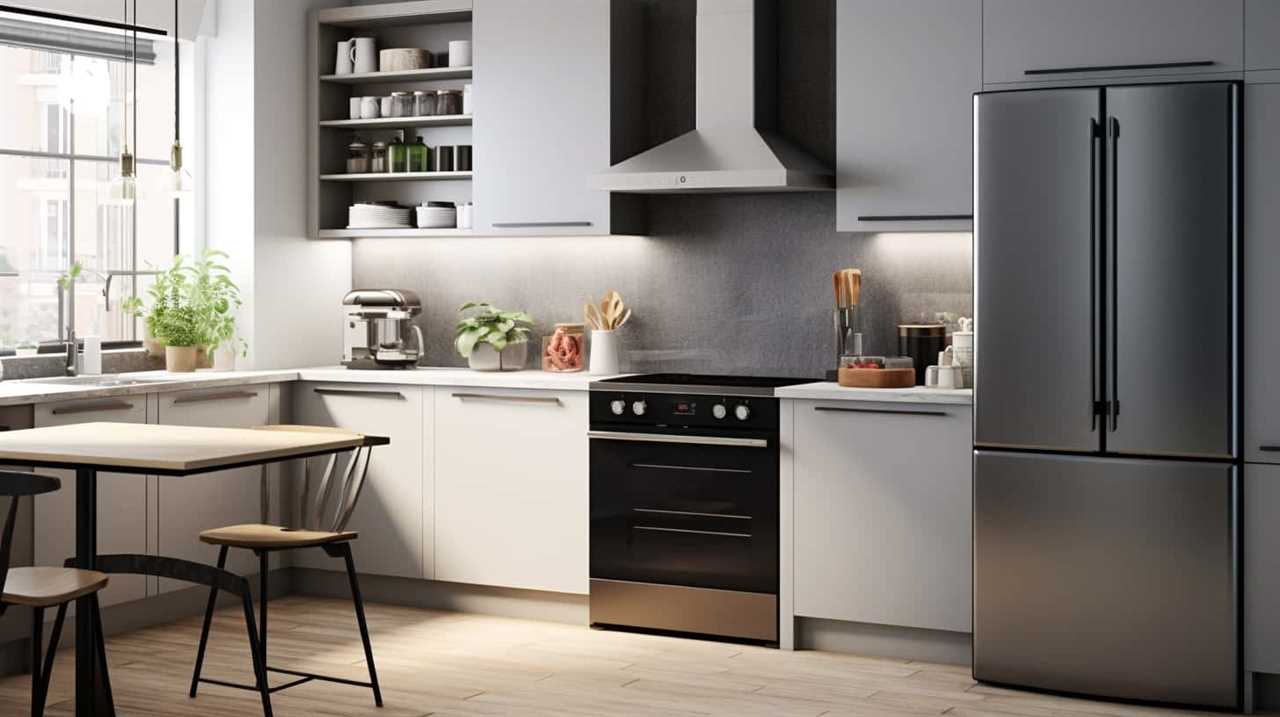
Limitations of Materials and Technology
When it comes to the limitations of materials and technology in appliance efficiency, there are several key points to consider.
Firstly, material constraints can impact the overall efficiency of appliances, as certain materials may not be able to withstand high temperatures or provide optimal insulation.
Additionally, technological limitations can also play a role, as advancements in technology may not always be readily available or affordable for mass production.
Lastly, there are often efficiency trade-offs that need to be made, as increasing one aspect of efficiency may lead to a decrease in another.

Understanding these limitations is crucial in developing appliances that are as efficient as possible.
Material Constraints
With material constraints, we face limitations in both the materials used and the technology employed, preventing appliances from achieving 100% efficiency.
Material limitations refer to the physical properties and characteristics of the materials used in appliance manufacturing. These limitations can include factors like heat resistance, electrical conductivity, and durability.
Technological advancements, on the other hand, pertain to the tools, techniques, and processes used to create appliances. These advancements are constantly evolving, but there are still hurdles to overcome.
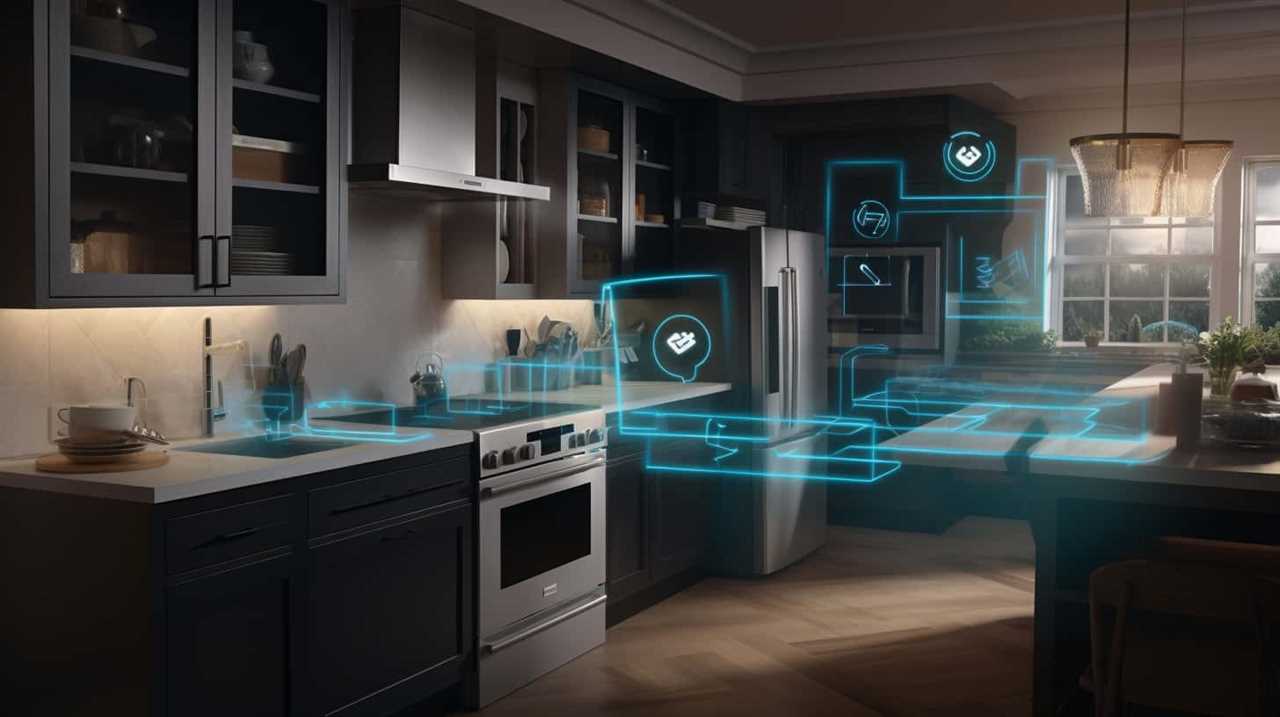
Here are two sub-lists that further explore the material constraints:
- Material limitations:
- Limited availability of high-efficiency materials
- Challenges in finding materials that are both cost-effective and environmentally friendly
- Technological advancements:
- Development of new manufacturing processes and techniques
- Integration of advanced sensors and controls for improved efficiency
Technological Limitations
One of the main reasons appliances are not 100% efficient is due to the limitations of materials and technology used in their manufacturing. Despite advancements in energy efficiency and technology, there are still inherent constraints that prevent appliances from reaching maximum efficiency. These limitations can be categorized into two main areas: materials and technology.
In terms of materials, appliances often rely on components that have inherent inefficiencies. For example, electrical wires used in appliances have resistance, which leads to energy losses in the form of heat. Similarly, materials used for insulation may not provide perfect thermal resistance, resulting in energy leakage. These material constraints limit the overall efficiency of appliances, even with advancements in energy-efficient materials.
On the technological front, appliances are limited by the capabilities of current technology. While there have been significant advancements in energy efficiency, there is still room for improvement. Technological advancements in areas such as motor efficiency, control systems, and heat exchange mechanisms can further enhance the efficiency of appliances.

To illustrate these limitations, consider the following table showcasing the current limitations in materials and technology:
| Materials | Technology |
|---|---|
| Electrical wires with resistance | Suboptimal motor efficiency |
| Insulation with imperfect thermal resistance | Inefficient control systems |
| Components with inherent energy losses | Limited heat exchange mechanisms |
Efficiency Trade-Offs
As we explore the efficiency trade-offs of appliances, it becomes clear that limitations in materials and technology play a crucial role. When it comes to energy-saving technologies, there are certain trade-offs that manufacturers have to make in order to achieve a balance between efficiency and functionality.
Here are some key points to consider:
- Materials: Certain materials might have limitations when it comes to energy efficiency. For example, heat transfer in some materials might not be as efficient, leading to energy losses.
- Technology: The current state of technology also impacts the efficiency of appliances. While advancements have been made, there are still limitations in terms of energy conversion and storage.
These efficiency trade-offs have a direct impact on the environment. As appliances consume energy, their efficiency directly affects energy usage and, consequently, the carbon footprint. It’s important to strike a balance between energy-saving technologies and the overall performance and functionality of appliances to maximize energy efficiency without compromising on user experience.

Heat Dissipation and Thermal Losses
When it comes to heat dissipation and thermal losses in appliances, there are several key points to consider.
First, inefficient insulation can lead to significant losses as heat escapes from the system.
Second, heat transfer between different components of the appliance can also contribute to reduced efficiency.
Lastly, energy conversion processes within the appliance can have inherent inefficiencies that result in thermal losses.
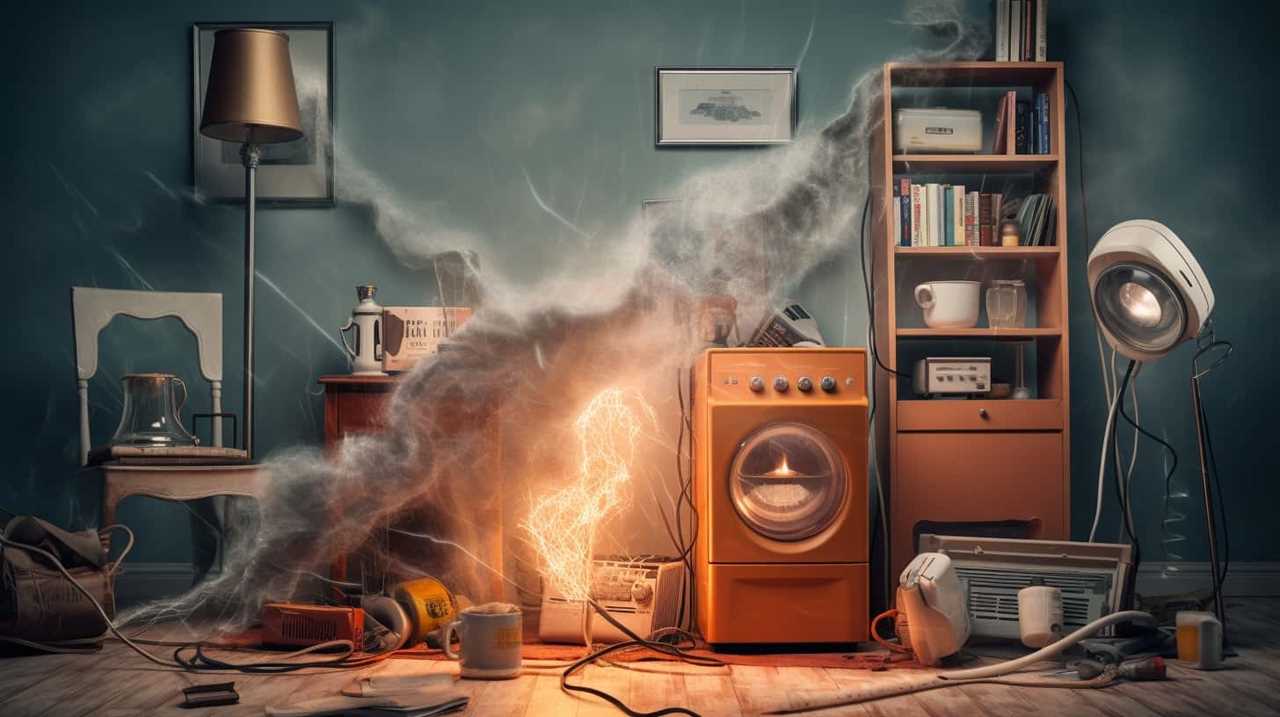
Understanding and addressing these points will be crucial in improving the overall efficiency of appliances.
Inefficient Insulation Causes Losses
To understand why appliances aren’t 100% efficient, we must examine the losses caused by inefficient insulation, which result in heat dissipation and thermal losses. Inefficient insulation is often a result of inefficient manufacturing processes and the use of outdated technology.
Here are two key factors contributing to inefficient insulation:
- Poor insulation materials: Appliances that are constructed with low-quality insulation materials or insufficient insulation thickness experience higher heat dissipation. This is because these materials can’t effectively trap and contain heat, leading to energy loss.
- Inadequate sealing: Inefficient insulation can also be attributed to poor sealing techniques. Gaps, cracks, and leaks in the appliance’s structure allow heat to escape, reducing overall efficiency. These openings act as pathways for heat transfer, causing thermal losses and increasing energy consumption.
Understanding the impact of inefficient insulation is crucial in addressing the issue of heat dissipation and thermal losses. By improving insulation materials and sealing techniques, appliance manufacturers can enhance energy efficiency and reduce energy waste.
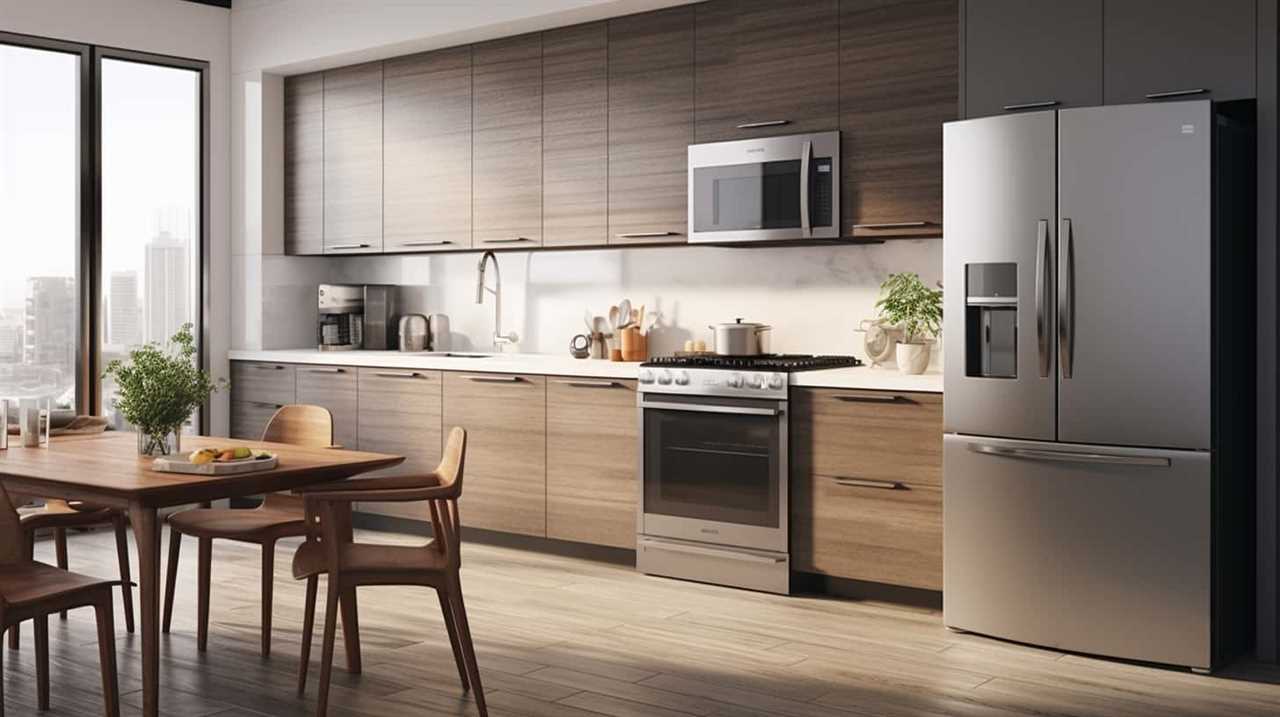
Heat Transfer Reduces Efficiency
Our discussion on inefficient insulation leads us to the next subtopic: heat transfer, which significantly reduces appliance efficiency due to heat dissipation and thermal losses. Heat transfer limitations play a crucial role in the overall efficiency of appliances. Thermal conductivity improvements can help mitigate these limitations and enhance the performance of appliances.
To better understand how heat transfer affects efficiency, let’s consider the following table:
| Heat Transfer Modes | Description |
|---|---|
| Conduction | Transfer of heat through direct contact between materials with different temperatures |
| Convection | Transfer of heat through the movement of fluids or gases |
| Radiation | Transfer of heat through electromagnetic waves |
By analyzing these modes, we can identify areas where thermal conductivity improvements can be made to reduce heat dissipation and thermal losses, ultimately increasing appliance efficiency.
Transitioning into the subsequent section, it is important to note that in addition to heat transfer limitations, energy conversion inefficiencies also contribute to the overall inefficiency of appliances.
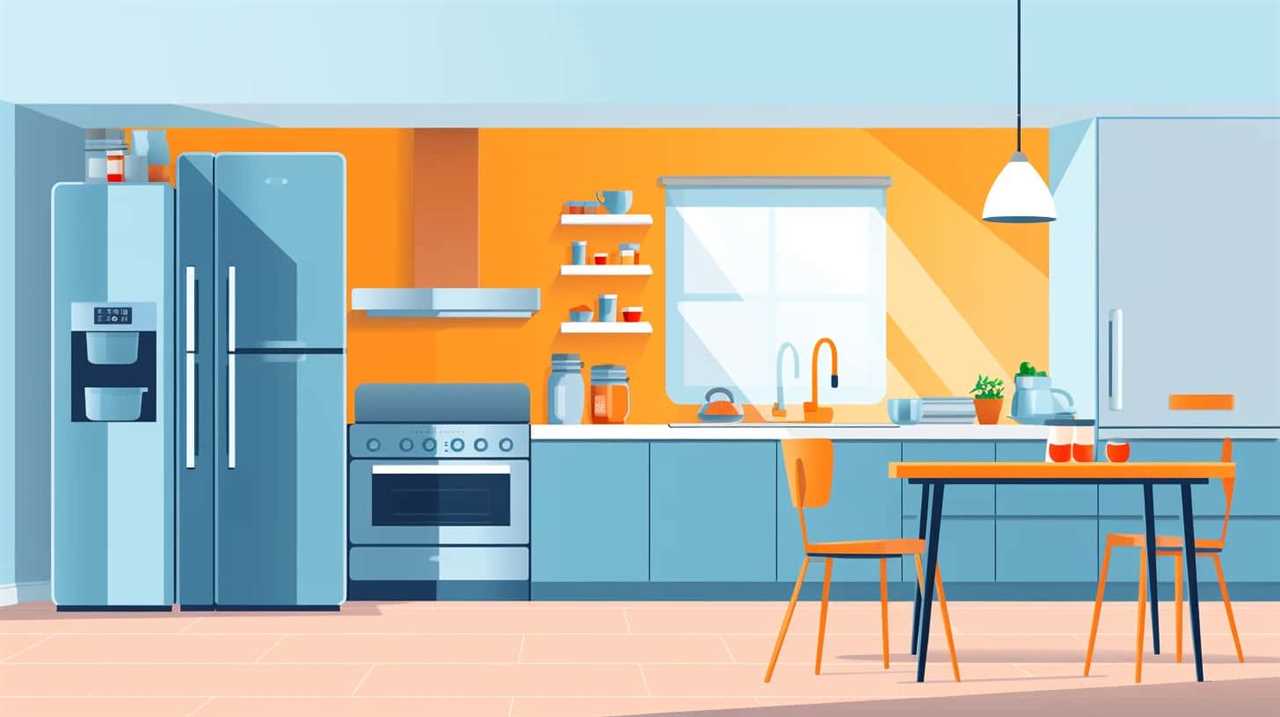
Energy Conversion Inefficiencies Occur
Additionally, energy conversion inefficiencies occur, leading to heat dissipation and thermal losses, further reducing the overall efficiency of appliances. These inefficiencies result from various factors that hinder the conversion of energy from one form to another. The impact of energy conservation measures becomes evident when considering these energy conversion inefficiencies.
To better understand the causes and effects of energy conversion inefficiencies, let’s examine two sub-lists:
- Factors contributing to energy conversion inefficiencies:
- Inherent limitations of the conversion process, such as mechanical losses in motors or electrical losses in transformers.
- Inaccuracies in the design and manufacturing of components, leading to energy losses during conversion.
- Consequences of energy conversion inefficiencies:
- Heat dissipation: As energy is converted, a portion is lost as heat, resulting in wasted energy that doesn’t contribute to the intended purpose.
- Thermal losses: Inefficient energy conversion generates excess heat, which can lead to overheating, reduced lifespan, and potential damage to the appliance.
Understanding these inefficiencies is crucial for identifying areas of improvement and implementing energy efficiency measures. By addressing these issues, we can enhance the overall efficiency of appliances and reduce energy wastage, benefiting both consumers and the environment.
Power Consumption in Standby Mode
Appliances in standby mode consume power even when not in use. Standby power refers to the energy consumed by electronic devices when they aren’t actively being used but are still plugged in. This power consumption occurs because appliances in standby mode are designed to respond to remote controls or wake up quickly when needed.

While this feature may seem convenient, it contributes to unnecessary energy wastage. However, manufacturers have recognized this issue and have implemented energy-saving features in modern appliances. These features include power-down modes, which reduce the standby power consumption significantly.
Additionally, some appliances now come with timers or sensors that automatically switch off the standby power after a certain period of inactivity. These advancements in energy-saving features are aimed at reducing standby power consumption and promoting energy efficiency in appliances.
Inefficient Energy Distribution Systems
Inefficient energy distribution systems contribute to the overall inefficiency of appliances. One major issue is the wasted energy during distribution, where a significant amount of electricity is lost as heat due to resistance in power lines.
Additionally, inadequate power grid infrastructure, such as outdated transformers and substations, further hampers the efficient delivery of electricity to consumers.
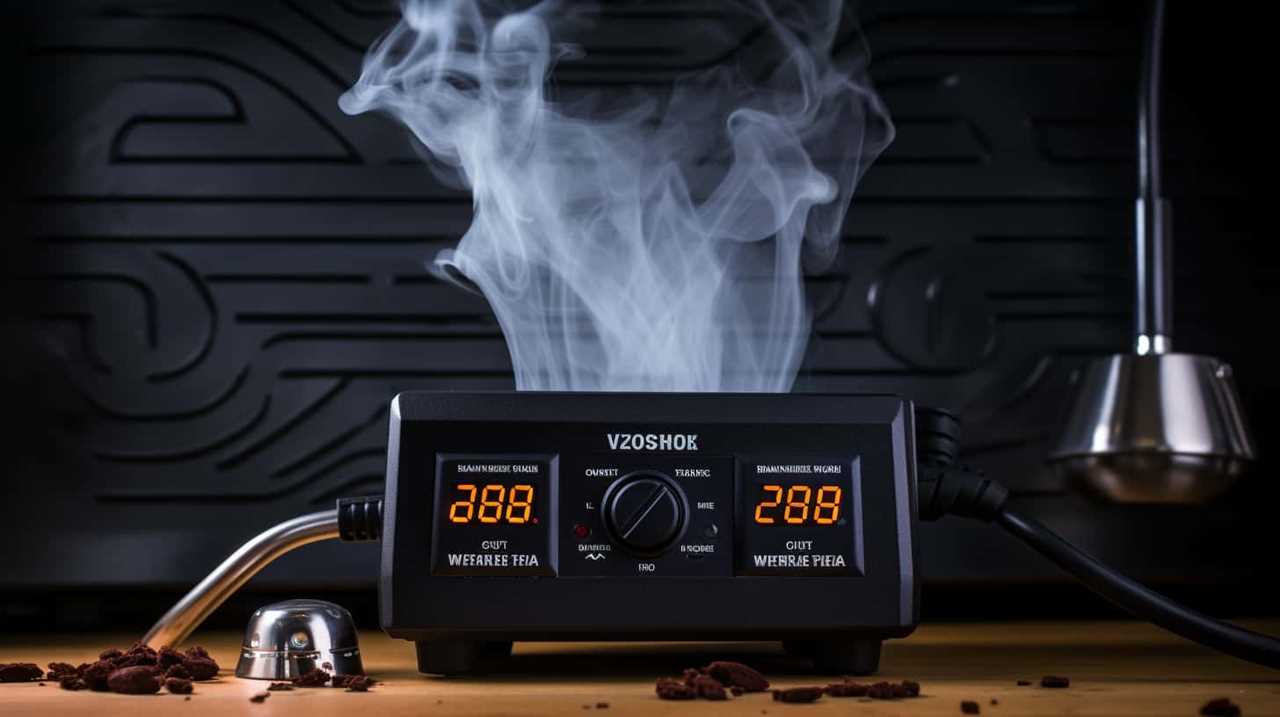
These factors highlight the need for improvements in energy distribution systems to increase overall energy efficiency.
Wasted Energy in Distribution
We can improve energy efficiency by optimizing energy distribution systems to minimize wasted energy. Energy distribution faces several challenges that contribute to energy loss and inefficiency.
- Inadequate infrastructure: Outdated power grid infrastructure leads to transmission losses and inefficiencies in energy distribution.
- Inefficient energy flow: In distribution systems, energy is often lost due to resistance, voltage drops, and line losses. This results in wasted energy and increased costs.
- Resistance: Resistance in transmission lines generates heat and reduces the overall efficiency of the system.
- Voltage drops: Voltage drops occur due to long-distance transmission, reducing the energy received at the end-user.
- Line losses: Energy is lost as heat during transmission and distribution due to factors like line resistance and magnetic fields.
Inadequate Power Grid Infrastructure
Addressing the challenges of inadequate power grid infrastructure is crucial for improving the efficiency of energy distribution systems. In many regions, the existing power grid infrastructure is outdated and not equipped to handle the increasing demand for electricity. This leads to inefficiencies in energy distribution, resulting in power losses and reduced overall system efficiency. To overcome these challenges, power grid upgrades are necessary.
Upgrading the power grid involves modernizing the infrastructure to accommodate higher capacities, improving the reliability of the system, and integrating renewable energy sources. This includes upgrading transmission lines, transformers, and substations, as well as implementing advanced monitoring and control systems. By investing in power grid upgrades and enabling seamless integration of renewable energy, we can significantly enhance the efficiency and reliability of our energy distribution systems.

However, even with these upgrades, there are still energy losses that occur during transmission and distribution processes.
Energy Losses in Transmission and Distribution
One major factor contributing to the inefficiency of appliances is the energy losses experienced during the transmission and distribution process. These losses occur due to various reasons, such as inefficient energy storage and power grid reliability issues.
Here’s a closer look at the energy losses in transmission and distribution:
- Line losses: As electricity is transmitted over long distances, there’s resistance in the power lines, leading to energy losses in the form of heat. This is known as line losses.
- Transformer losses: Transformers are used to step-up or step-down the voltage during transmission and distribution. However, these transformers aren’t 100% efficient and result in energy losses.
- Switching losses: Switching devices, such as circuit breakers and switches, are used to control the flow of electricity. However, these devices also introduce energy losses due to their inherent characteristics.
- Distribution losses: Once the electricity reaches the distribution network, there are further losses due to the distribution transformers and other equipment used to deliver electricity to consumers.
Inaccurate Energy Measurements
To understand the inefficiency of appliances, it’s important to consider the issue of inaccurate energy measurements. Inadequate measurement and inaccurate calculations can significantly affect the overall efficiency of appliances. Energy measurements are crucial in determining the actual amount of energy consumed by an appliance, and any inaccuracies in these measurements can lead to misleading results.
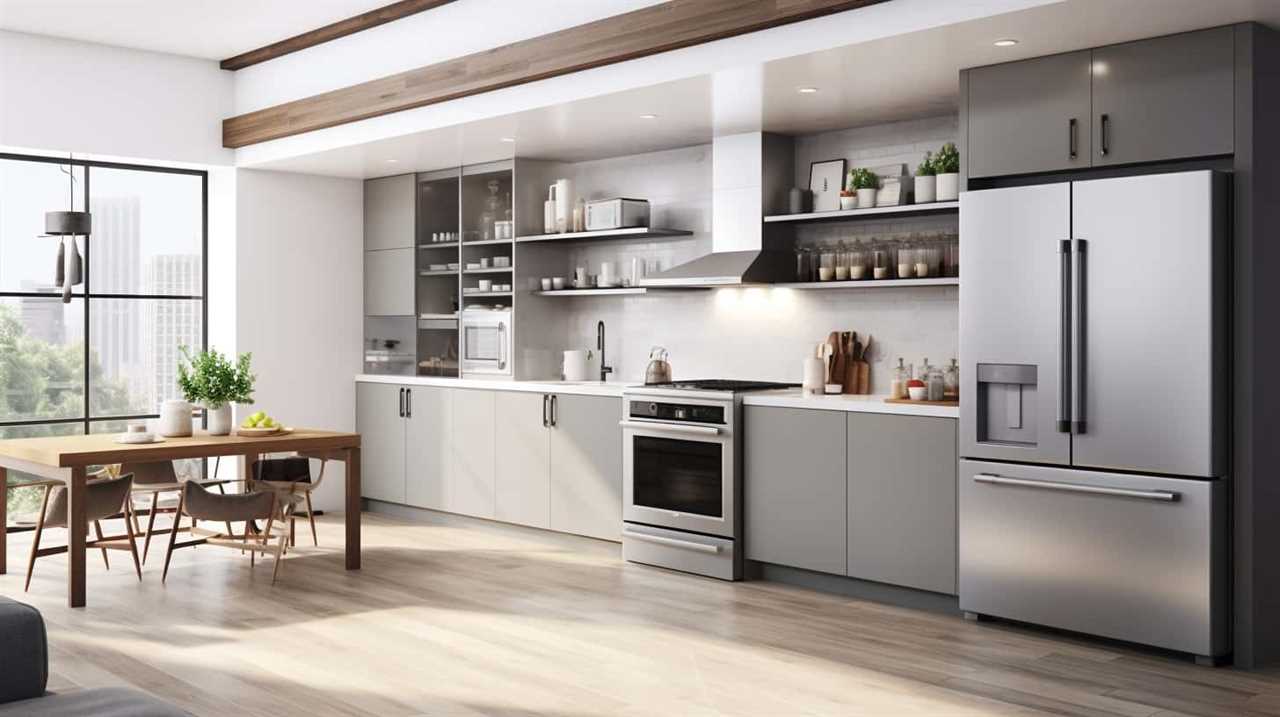
Inaccurate energy measurements can be caused by various factors, such as calibration errors, sensor malfunctions, or improper installation. These inaccuracies can result in overestimation or underestimation of energy consumption, leading to inefficient use of energy resources. Moreover, inaccurate measurements can also affect the accuracy of energy labels and ratings, further complicating the decision-making process for consumers.
Therefore, addressing the issue of inaccurate energy measurements is essential for improving the overall efficiency of appliances. Moving forward, we’ll explore another contributing factor to appliance inefficiency: the lack of standardization and regulation.
Lack of Standardization and Regulation
In our exploration of why appliances aren’t 100% efficient, we now turn our attention to the lack of standardization and regulation in the industry.
One of the key issues is the inconsistency in energy consumption regulations across different regions and countries. This lack of uniformity makes it difficult to compare the efficiency of appliances and hinders efforts to improve energy efficiency on a global scale.
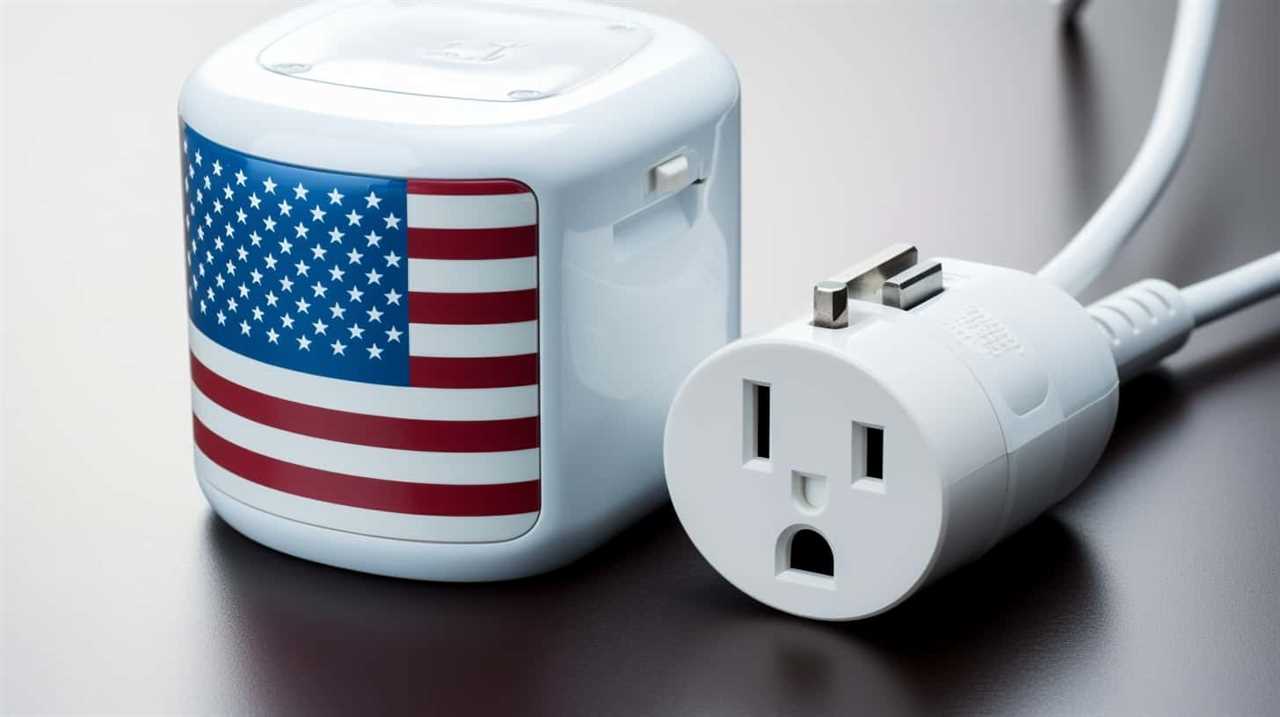
Additionally, the absence of efficiency standards allows manufacturers to produce appliances that may not meet the highest levels of efficiency, further contributing to overall energy wastage.
Inconsistent Energy Consumption Regulations
Our research shows that many appliances aren’t 100% efficient due to the lack of consistent energy consumption regulations and standardization in the industry. Incomplete regulations and inconsistent enforcement contribute to the inefficiency of appliances. Here are two key factors that hinder the achievement of maximum efficiency:
- Incomplete regulations: The absence of comprehensive regulations regarding energy consumption standards for appliances allows manufacturers to produce and sell products that don’t meet optimal efficiency levels. This lack of specific guidelines leaves room for interpretation and variation in energy efficiency across different appliance models and brands.
- Inconsistent enforcement: Even when energy consumption regulations exist, the enforcement of these regulations can be inconsistent. Inadequate monitoring and enforcement mechanisms allow some manufacturers to bypass or neglect compliance with energy efficiency standards, resulting in the production and sale of appliances that consume more energy than necessary.
To achieve 100% efficiency in appliances, it’s crucial to establish complete and stringent regulations while ensuring their consistent enforcement. This would create a level playing field for manufacturers and promote the development of energy-efficient appliances.
Absence of Efficiency Standards
Lack of standardization and regulation in the industry perpetuates the absence of efficiency standards for appliances. Without clear energy efficiency standards, manufacturers aren’t compelled to prioritize energy conservation measures in their product designs. This lack of regulation allows for a wide range of energy consumption levels among appliances, resulting in inefficient use of electricity and unnecessary energy waste.

Energy efficiency standards are crucial for promoting the development and adoption of energy-saving technologies. These standards set minimum requirements for energy performance, ensuring that appliances are designed to operate at the highest level of efficiency possible. By implementing energy efficiency standards, governments can encourage manufacturers to produce appliances that consume less energy while still providing the same level of functionality and performance.
In the absence of such standards, consumers are left with limited information to make informed choices about energy-efficient appliances. This lack of transparency hinders the market for energy-saving products, as consumers may prioritize other factors such as price or aesthetics over energy efficiency. Furthermore, without standardized efficiency ratings, it becomes difficult for consumers to compare the energy consumption of different appliances accurately.
To address these challenges, it’s essential for governments and industry organizations to establish and enforce energy efficiency standards. These standards should be regularly updated to reflect advancements in technology and the evolving needs of consumers. By doing so, we can promote the widespread adoption of energy-efficient appliances, reduce energy consumption, and contribute to a more sustainable future.
Trade-Offs Between Efficiency and Cost
To achieve optimal efficiency, appliance manufacturers must carefully balance the trade-offs between cost and performance. This delicate equilibrium requires implementing energy-saving technologies while also considering cost-effective solutions.

When it comes to energy-saving technologies, manufacturers need to invest in innovative designs and components that minimize energy consumption without compromising performance. This could involve using advanced insulation materials, efficient motors, or smart control systems that optimize energy usage.
However, incorporating these technologies often comes at a higher cost, which can make appliances more expensive for consumers. To counterbalance this, manufacturers must find cost-effective solutions that allow them to reduce production costs without sacrificing efficiency. This could involve streamlining manufacturing processes, sourcing materials from lower-cost suppliers, or leveraging economies of scale.
Complexity and Design Constraints
When considering the trade-offs between efficiency and cost, appliance manufacturers must contend with the complexity and design constraints of creating high-performing, energy-saving appliances.
Developing energy efficient designs requires a deep understanding of the various components and technologies involved. Manufacturers must carefully select materials and components that minimize energy losses and maximize performance. This involves extensive research and development, as well as rigorous testing and optimization processes.
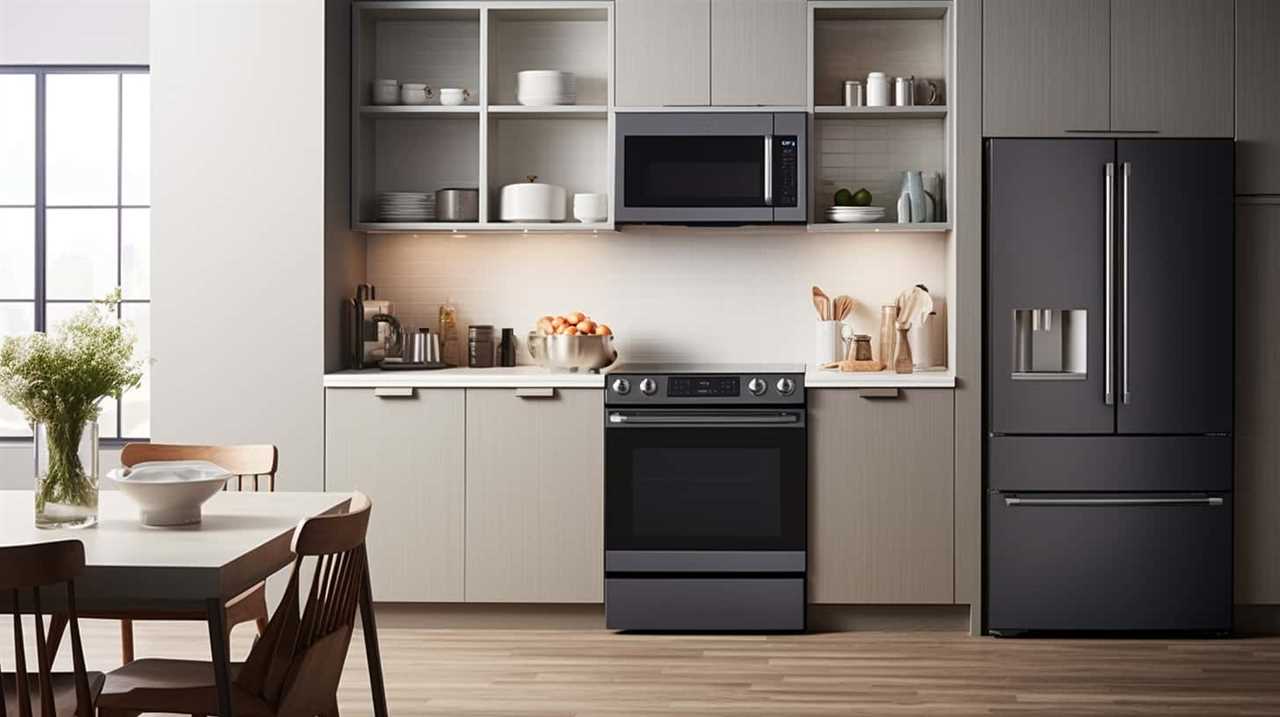
Additionally, design constraints such as space limitations, safety requirements, and regulatory standards must be taken into account. Balancing these factors can be challenging, as energy efficient designs often require more advanced technologies and materials, which can increase manufacturing costs.
Therefore, appliance manufacturers must constantly strive to find cost-effective solutions that meet both energy efficiency goals and consumer demands.
Human Factors and User Behavior
Our research has shown that consumers play a significant role in the efficiency of appliances. Understanding user psychology and energy-saving habits is crucial in improving appliance efficiency.
Here are two important factors to consider:
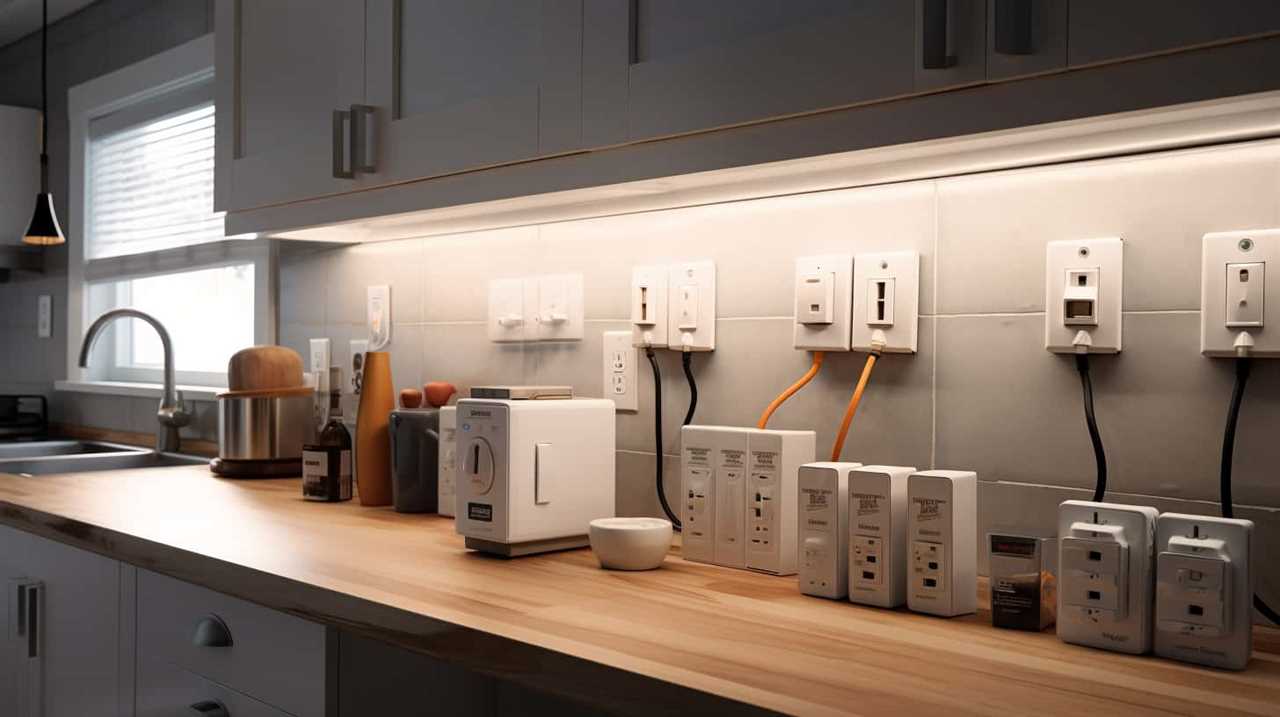
- User Psychology:
- Decision-making: Consumers often prioritize immediate benefits over long-term energy savings. They may overlook energy-efficient options due to lack of awareness or perceived higher costs.
- Comfort and convenience: Users tend to prioritize comfort and convenience over energy efficiency. For example, they may leave appliances on standby mode or use higher temperature settings for greater comfort.
- Energy Saving Habits:
- Awareness and education: Educating consumers about the benefits of energy-saving habits can lead to behavior change. Promoting energy-efficient practices, such as turning off appliances when not in use or using energy-saving settings, can significantly impact efficiency.
- Feedback and monitoring: Providing real-time feedback on energy consumption can motivate users to adopt energy-saving habits. Smart appliances with energy monitoring features can promote conscious energy consumption.
Understanding user psychology and promoting energy-saving habits can help consumers make informed decisions and contribute to improved appliance efficiency.
Maintenance and Wear Over Time
Appliances inevitably experience deterioration and decreased efficiency due to regular maintenance and wear over time. Maintenance costs play a significant role in ensuring the long-term durability of appliances.
Regular maintenance, such as cleaning and replacing worn-out parts, is essential to keep appliances running efficiently. Failure to perform regular maintenance can lead to increased energy consumption and reduced performance.
Over time, wear and tear can cause components to degrade, resulting in decreased efficiency and increased energy consumption. This can also lead to higher maintenance costs as repairs become necessary.

Long-term durability is crucial for appliances to function at their optimal efficiency levels. By investing in regular maintenance and addressing wear and tear promptly, users can prolong the lifespan of their appliances and minimize both maintenance costs and energy consumption.
Environmental Factors and External Conditions
Another factor that can contribute to the decreased efficiency of appliances is the influence of environmental factors and external conditions. These factors can include the temperature and humidity levels in the surrounding environment, as well as the quality of the electrical supply.
Here are some specific ways in which these factors can impact appliance efficiency:
- Temperature: Extreme temperatures can affect the performance of appliances, especially those with temperature-sensitive components. High temperatures can cause overheating and decrease the efficiency of the appliance, while low temperatures can reduce its ability to function properly.
- Humidity: Excessive humidity can lead to moisture buildup inside appliances, which can affect their electrical components and lead to malfunctions or decreased efficiency.
- Electrical supply: Poor quality or unstable electrical supply can cause appliances to work harder and consume more energy, leading to decreased efficiency.
To mitigate the impact of these environmental factors, energy-saving technologies have been developed. However, the impact of consumer behavior can’t be ignored. Proper maintenance, regular cleaning, and using appliances according to manufacturer guidelines are essential to ensure optimal efficiency and prolong their lifespan.
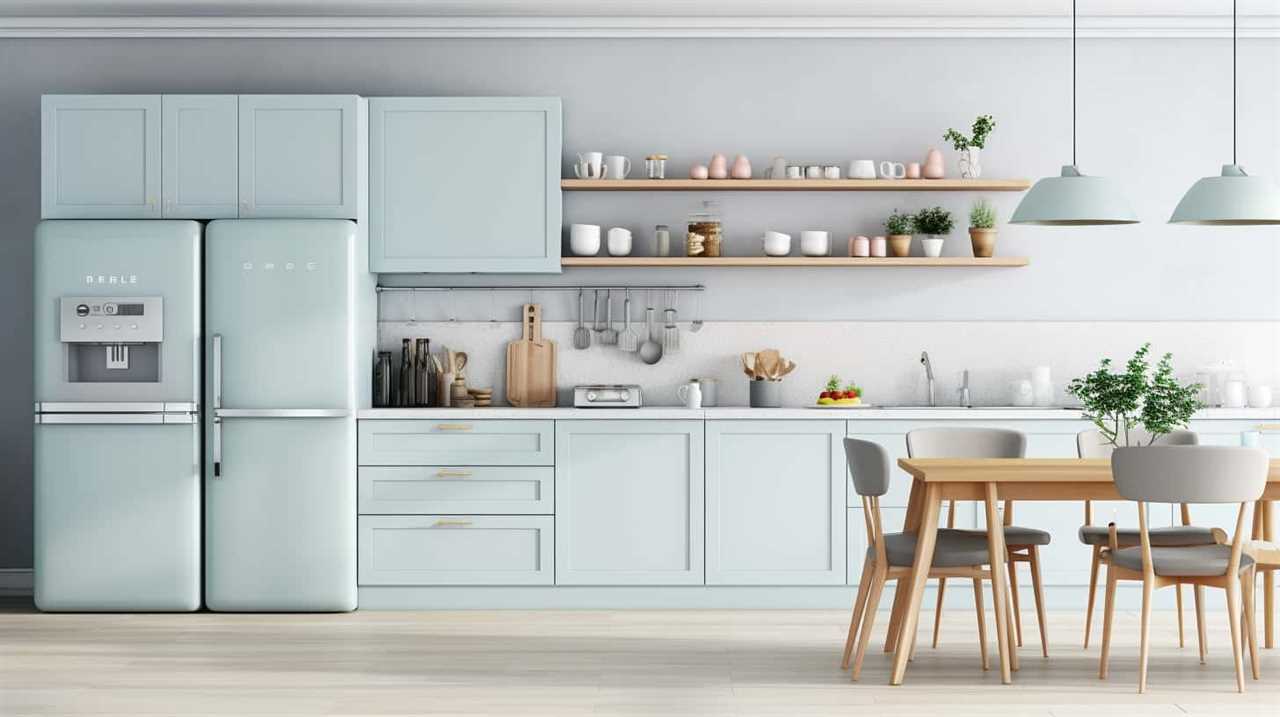
Future Innovations and Energy Efficiency Goals
We can expect future innovations and energy efficiency goals to drive the development of more advanced and environmentally-friendly appliances.
As technology continues to advance, manufacturers are constantly striving to improve the energy efficiency of their products. Energy efficiency targets set by governments and organizations are also pushing for the development of appliances that consume less energy and reduce greenhouse gas emissions.
One area of innovation is the use of smart technology, which allows appliances to optimize their energy usage based on real-time data and user preferences.
Additionally, advancements in materials and design are enabling the creation of appliances that are more energy-efficient without sacrificing performance.

These future innovations and energy efficiency goals will play a crucial role in reducing energy consumption and promoting sustainable living.
Frequently Asked Questions
How Can Human Behavior Affect the Efficiency of Appliances?
Energy saving habits and user behavior can have a significant impact on the efficiency of appliances. By being mindful of our actions, we can reduce energy waste and maximize the performance of our appliances.
What Are the Common Maintenance Practices to Ensure Optimal Efficiency of Appliances Over Time?
To ensure optimal efficiency of appliances over time, we must prioritize regular appliance maintenance. By adhering to proper cleaning, checking for leaks, and replacing worn-out parts, we can effectively improve appliance efficiency.
How Do Environmental Factors, Such as Temperature and Humidity, Impact the Efficiency of Appliances?
The impact of weather conditions, such as temperature and humidity, on the efficiency of appliances is significant. Insulation plays a crucial role in minimizing energy loss and maintaining optimal performance.
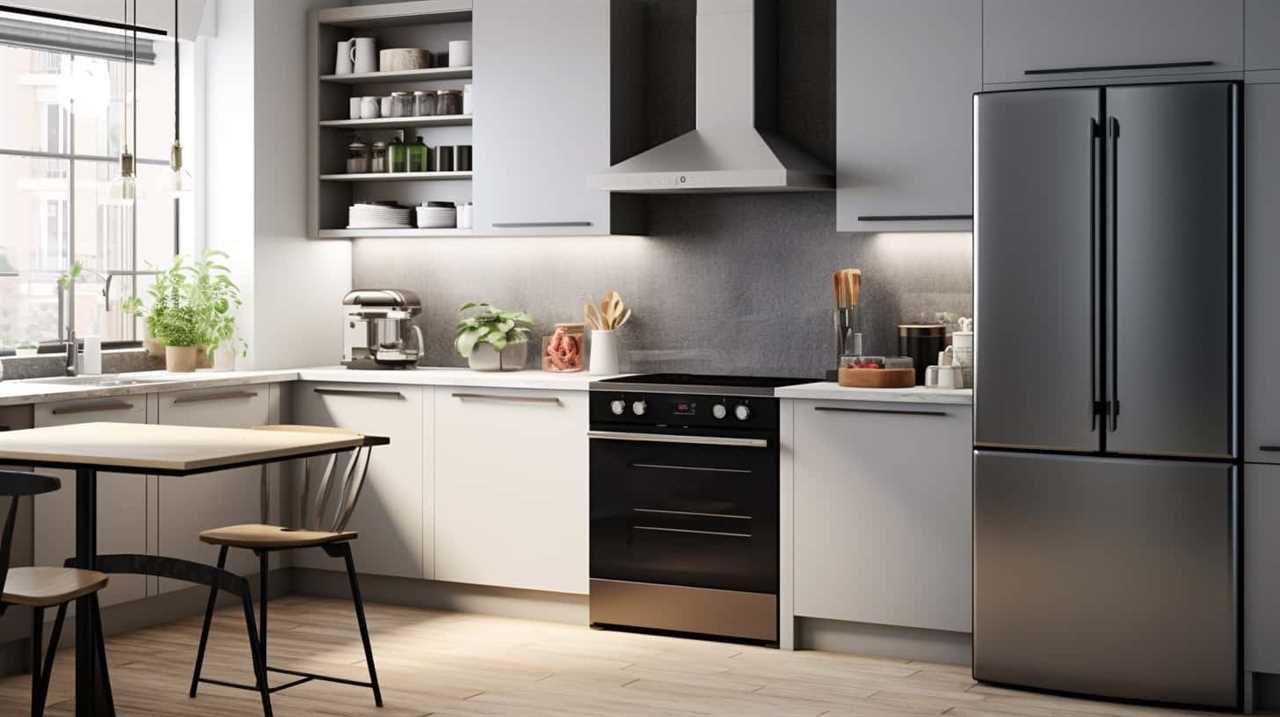
Are There Any Ongoing Research or Future Innovations Aimed at Improving Energy Efficiency in Household Appliances?
There are ongoing research and future innovations aimed at improving energy efficiency in household appliances. Smart technology and advancements in insulation are being explored to maximize efficiency and reduce energy consumption.
What Are the Energy Efficiency Goals Set by Regulatory Bodies and Organizations for Appliances in the Future?
Energy efficiency standards for appliances are set by regulatory bodies and organizations. These standards aim to improve energy efficiency and reduce energy consumption. Appliance labeling helps consumers make informed choices and encourages manufacturers to meet these goals.
What Factors Affect the Efficiency of Kitchen Appliances?
The efficiency of kitchen appliances can be influenced by various factors. Quality of materials, proper maintenance, and regular cleaning all play a crucial role in ensuring optimal performance. Choosing to invest in toprated kitchen appliance brands can also significantly impact the overall efficiency and longevity of your kitchen appliances.
Conclusion
In conclusion, while appliances strive for optimal efficiency, various factors contribute to their inability to achieve 100% efficiency.
The intricate conversion processes, inherent component inefficiencies, limitations of materials and technology, heat dissipation and thermal losses, power consumption in standby mode, human behavior, maintenance and wear, and environmental factors all contribute to energy losses.

However, advancements in technology and future innovations hold promise for achieving higher levels of efficiency and reducing our environmental impact.




